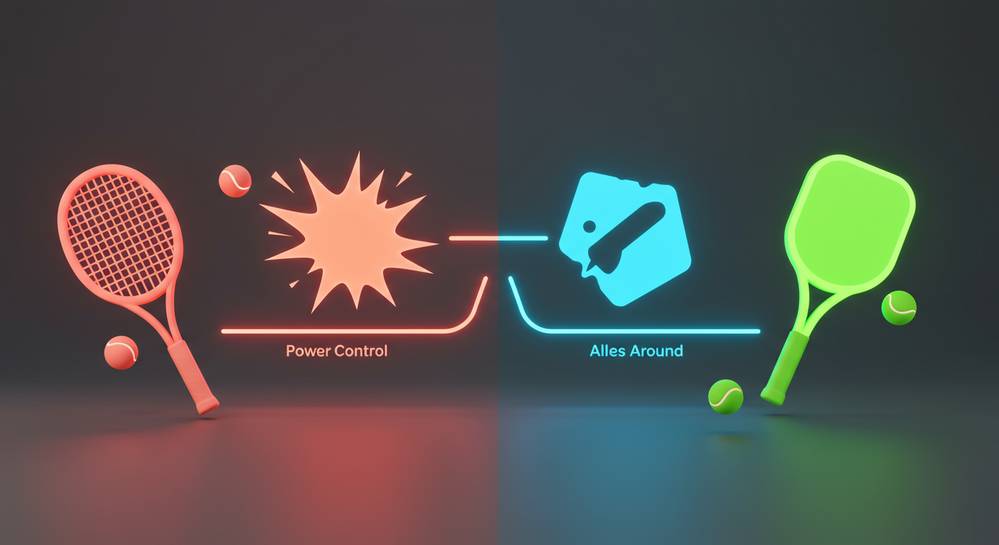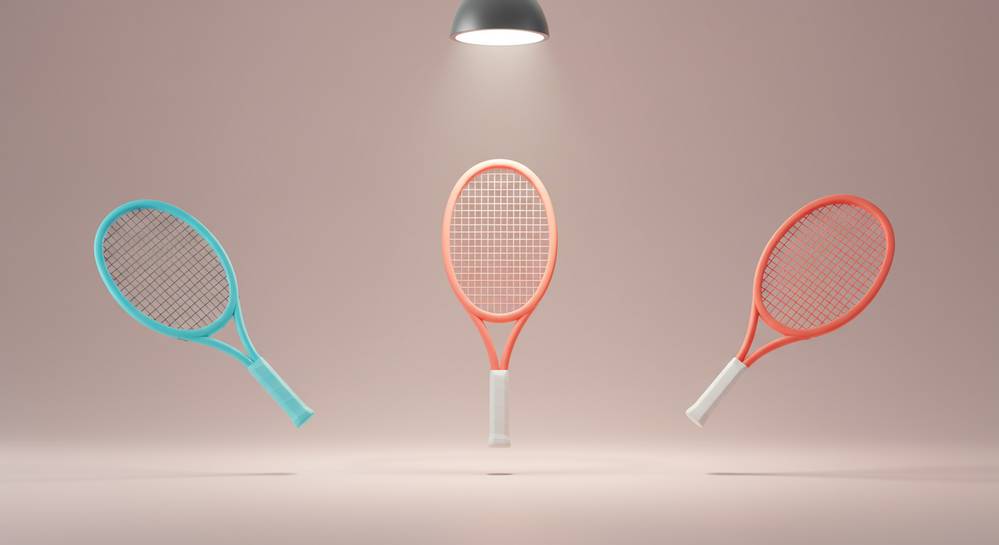Choosing the right tennis racket can feel overwhelming given the vast array of options available. The perfect frame can elevate your performance, while the wrong one can hinder progress and even cause injury. This guide simplifies the process of how to choose a tennis racket by breaking down the essential factors. We will help you analyze your needs and understand the technology to make a confident decision.
Assess your player profile first

Understanding your own game is the crucial first step in learning how to choose a tennis racket. A racket is a specialized tool, and the right one must align with your skill level and playing style. An honest self-assessment ensures you select a frame that enhances your abilities, rather than hindering your progress on the court. Most players can be classified into one of three main profiles.
Beginner player profile
Beginner players, or those who play infrequently, should prioritize ease of use. Your primary goal is to build consistency and develop fundamental strokes. A suitable racket will be forgiving on off-center hits and provide effortless power, helping you get the ball over the net and deep into the court while you learn the basics of the game.
Intermediate player profile
Intermediate players have established strokes and can sustain rallies consistently. You can generate your own pace but still benefit from a racket that offers a balanced mix of power and control. The ideal frame at this stage complements your developing game, providing extra stability and pop without sacrificing too much feel or precision on your shots.
Advanced player profile
Advanced players possess solid mechanics and a well-defined style of play. You generate your own power, so the focus shifts entirely to precision, control, and feedback. Your racket should act as an extension of your arm, offering the pinpoint accuracy needed to execute complex shots and dictate points with confidence against strong opponents.
Decoding key racket specifications
Racket technology is defined by a few key specifications. Understanding these numbers is a core part of how to choose a tennis racket, as they directly influence performance. Matching these specs to your player profile is essential for finding a frame that complements your game. These elements work together to create the unique feel and response of every racket on the court. Here is a breakdown of the most important factors to consider.
| Specification | Impact on Play | Recommended For |
|---|---|---|
| Head Size | A larger head provides more power and a larger sweet spot, making it more forgiving. A smaller head offers greater control and feel. | Beginners (Large), Advanced (Small) |
| Weight | Heavier rackets deliver more power and stability but are harder to swing. Lighter rackets are more maneuverable but less stable on impact. | Beginners (Light), Advanced (Heavy) |
| Balance | Head-heavy rackets increase power. Head-light rackets enhance maneuverability, allowing for faster swings to generate spin and control. | Beginners (Head-Heavy), Advanced (Head-Light) |
| String Pattern | Open patterns like 16×19 grip the ball more for increased spin and power. Dense patterns like 18×20 provide superior control and durability. | Spin Players (Open), Flat Hitters (Dense) |
These specifications do not exist in isolation. They interact to define a rackets overall personality, creating a specific blend of power, control, and comfort for the player.
Match racket types to your needs

With your player profile and key specs understood, you can now explore the main racket categories. Manufacturers group frames into three types, which simplifies the process of how to choose a tennis racket. This framework helps you match a racket type directly to your needs, narrowing down your options effectively. Each category is designed to support a specific level of play and style.
Power or game improvement rackets
Designed for beginners, these rackets help generate pace easily. They feature oversized heads, are lightweight, and often have a head-heavy balance. This creates a large sweet spot and provides effortless power, helping you build consistency as you develop your game. They are the most forgiving option for new players.
Control or players rackets
Tailored for advanced players, these frames prioritize precision and feel. They have smaller head sizes, more weight, and a head-light balance. This combination rewards solid technique with exceptional control, allowing players to place the ball with pinpoint accuracy. These rackets demand that the player generates their own power.
Tweener rackets
Tweener rackets offer a popular blend of power and control. They are perfect for intermediate players or those wanting a forgiving yet responsive frame. With mid-plus head sizes and a moderate weight, they deliver a versatile all-around performance that suits a wide range of playing styles. This makes them the most common choice on the market.
Making the final decision

Once you have narrowed your options, two final steps will ensure your choice is perfect for the court. These actions are the most practical part of how to choose a tennis racket, turning theoretical specs into real-world feel. Rushing this stage is a common mistake that can lead to a poor purchase, so taking the time to verify your choice is crucial for long-term satisfaction and performance on the court.
Confirm the correct grip size
Playing with an incorrect grip size can cause discomfort and may even lead to injuries like tennis elbow. The right size allows for a secure yet relaxed hold on the racket. To find your size, hold the racket and check the space between your palm and fingertips. There should be just enough room to fit the index finger of your non-hitting hand. Too much or too little space indicates the grip is the wrong size for you.
Always demo before you buy
This is the most critical step. You would not buy a car without a test drive, and the same logic applies to a tennis racket. Specifications on paper cannot capture how a frame feels during play. Most specialty tennis shops offer demo programs, allowing you to try a racket on court. Hitting with a frame for an hour or two is the only way to be certain it truly complements your game.
Finding the right racket is not about the latest model but about the best fit for your unique game. By assessing your skill level, understanding the core specifications, and demoing your top choices, you are investing in your own improvement and enjoyment on the court. For more expert insights and sports gear reviews, explore Sport Wave Quest.




